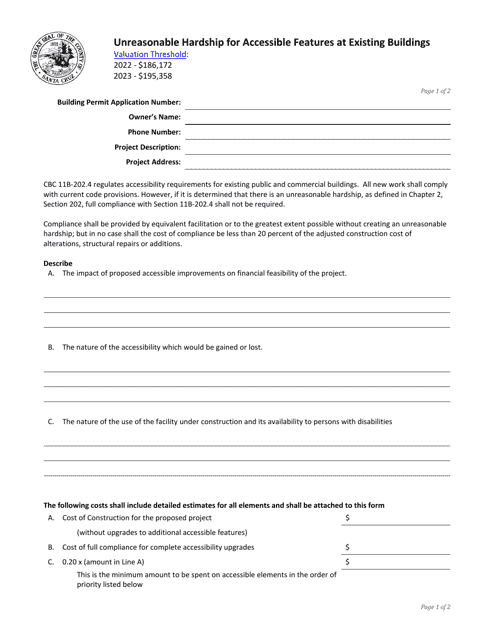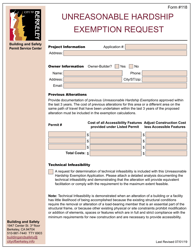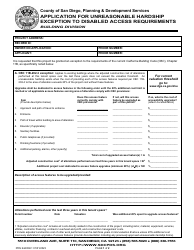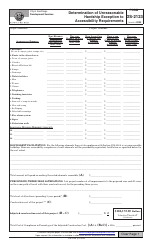Unreasonable Hardship for Accessible Features at Existing Buildings - Santa Cruz County, California
Unreasonable Hardship for Accessible Features at Existing Buildings is a legal document that was released by the Planning Department - Santa Cruz County, California - a government authority operating within California. The form may be used strictly within Santa Cruz County.
FAQ
Q: What is unreasonable hardship for accessible features at existing buildings?
A: Unreasonable hardship refers to significant difficulty or expense in making a building accessible to individuals with disabilities.
Q: Who is responsible for providing accessible features at existing buildings?
A: The building owner or occupant is responsible for providing accessible features at existing buildings.
Q: What are some examples of accessible features in buildings?
A: Examples of accessible features include ramps, elevators, accessible parking spaces, and wheelchair-accessible entrances.
Q: What can be done if providing accessible features causes unreasonable hardship?
A: If providing accessible features causes unreasonable hardship, an alternative solution may be considered, like providing equivalent facilitation or relocating the business.
Q: What is the purpose of requiring accessible features at existing buildings?
A: The purpose is to ensure that individuals with disabilities have equal access to public spaces and services.
Form Details:
- The latest edition currently provided by the Planning Department - Santa Cruz County, California;
- Ready to use and print;
- Easy to customize;
- Compatible with most PDF-viewing applications;
- Fill out the form in our online filing application.
Download a fillable version of the form by clicking the link below or browse more documents and templates provided by the Planning Department - Santa Cruz County, California.








